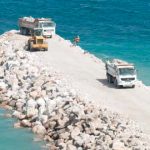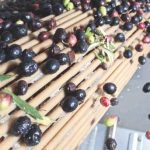Phosphates and more
The Moroccan government recently kick-started the exploration and exploitation of other minerals in order to bring diversity to the country’s mining sector.
Although Morocco relies more on its brains than its earthen sub-strata, mining does represent an important component for the economy. In 2010 the mining sector represented 6% of the country’s GDP, about 27% of the national export earnings, and provided employment to roughly 35,000 people.
Like many other countries, Morocco is basically a one-commodity show, with phosphates being the Moroccan bread-winner. Used mostly for agricultural fertilizers, phosphates represent about 94% of total mining output by volume.
Morocco is believed to hold the bulk of global phosphates reserves. The country is the world’s third-largest producer of phosphates and accounts for around 17% of global output. Due to strong international demand and tight supply, prices are expected to remain high in 2012.
The Phosphates Company (OCP) is one of the world’s biggest exporters of phosphates. It has a monopoly on phosphate mining in Morocco and plans to double annual production capacity by 2020 to 50 million tons a year. OCP employs almost 20,000 people.
The company is solely responsible for the production and sale of Moroccan phosphate resources, mined at the Benguérir, Khouribga, Youssoufia mines in central Morocco, and the Boucraa mine in southern Morocco. Altogether these sites represent about 86 billion cubic meters of reserves. OCP is a stateowned company created in 1920.
Other minerals
Morocco recognizes its mining sector is overly dependent on phosphates and needs to diversify. Therefore it has started mapping out its geological resources under the National Geological Mapping Plan and is actively leveraging private investors to help develop alternative minerals.
Although still small by international standards, Morocco is an active producer of precious metals (silver and gold) and of other ores (iron, lead, zinc, copper). In 2010 these latter four racked up production volumes of about 50,000 tons each.
Mineral deposits have been found throughout the country. Lead, fluorine and antimony are found in the center of the country. The Anti-Atlas Mountains contain copper, manganese, gold and silver deposits, as well as strategic metals such as cobalt, tin and wolfram. The High Atlas range has deposits of lead, zinc, copper, manganese, iron and barite, while the eastern part of the country has reserves of lead, zinc and coal.
To attract foreign attention to the country’s mining opportunities, Morocco has substantially changed the legal framework for mining. “Mining companies that export from Morocco have the advantage of a lower 17.5% corporate tax rate as do mineral producers who sell on to value-added transforming companies for export,” explains Julien David of French law firm Gide GLN.
Hydrocarbon search
Oil and gas exploration and research in Morocco is spearheaded by the National Hydrocarbons and Mines Office (Office National des Hydrocarbures et des Mines or ONHYM).
Compared to its neighbors (Algeria, Mauritania and Libya) which have vast proven reserves, Morocco’s petroleum potential is still largely unknown. But geologic research carried out from 2000 to 2011 shows a glimmer of hope. According to ONHYM: “Several viable petroleum systems, with good hydrocarbon potential, exist in Moroccan sedimentary basins.” ONHYM has carried out exploratory drillings, either on its own or via licenses granted to foreign companies, and has identified 26 sites as promising for future exploitation. Morocco currently counts only 18 active sites.
Investment prospects
The strategic potential for phosphates is downstream in added-value activities, such as in the production of phosphoric acid, ready-made fertilizers and other chemical derivatives. The Moroccan chemical industry is growing rapidly as new compounds are being produced locally.
Elsewhere, the emphasis is on finding and developing new minerals production, in partnership with qualified foreign partners. Another area that offers future growth potential is quarrying, namely for marble and granite. ●
For more information:
ONHYM
OCP
Ministry of Energy, Mines, Water and the Environment
Grand Central Phosphate
OCP, Morocco’s largest company with $5.2 billion in 2010 revenues, is helping move the country up the phosphate value chain. Why settle for the export of raw phosphates when one can produce finished or semi-finished products locally and export those?
With this vision in mind, OCP is developing Jorf Phosphate Hub (JPH) in Jorf Lasfar, a coastal town about 125 kms southwest of Casablanca. JPH is no small project: the total investment is set for $1.17 billion, in two phases. Over 300 acres have been set aside for factories, storage warehouses, materials handling equipment, and of course new harbor facilities to export the products (chemicals, fertilizers, and other phosphate-based products).
“The principle of JPH is to offer ‘plug-and-play’ options to companies wishing to develop downstream phosphate activities,” explains the JPH Project Manager at OCP. The hub will provide its industrial tenants with all the required infrastructure: water, electricity, waste treatment, pipelines, security, and of course roads and bridges to connect to the domestic and export supply chains. JPH will open in phases, with its first phase of four industrial plants opening in 2013, and the remainder in 2015.




